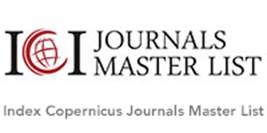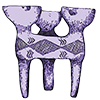Struggling, Stupendous Female Artistic Aspirations
DOI:
https://doi.org/10.33831/jws.v18i2.251Keywords:
women artist, expression of love, life, pain, women’s achievement, women’s struggleAbstract
Women’s struggles to express themselves artistically, whether in the visual arts or in literature, has never been easy. This writing evaluates women’s creative efforts, from Virginia Woolf’s fictional Judith Shakespeare, to the playwrights Aphra Behn and Elizabeth Inchbald, whose plays scarcely outlived their own era. In the twentieth century, Woolf shows Lily Briscoe painting despite discouragement, and Margaret Atwood and A.S. Byatt’s female characters describe similar artistic struggles to achieve success. The real-life efforts of Sylvia Plath show her creating through the traumas of her life, while Frida Kahlo undertakes a parallel struggle to create her amazing paintings through dreadful pain. These two consummate artists, Plath and Kahlo, immortalize woman’s agonizing self-expression in their verbal and visual portraits, overcoming considerable obstacles. This work presents the historical toils and fictional accounts of women artists in their attempts at artistic self-expression, proving that such efforts come at a high cost to the artist even to this day.
References
Atwood M. (1982). Surfacing. In Clerc C. & Leiter L. (Eds.), Seven Contemporary Short Novels. USA: Harper Collins Publishers: 501-648.
Atwood M. (1989). Cat’s Eye. New York: Bantam.
Atwood M. (1985). The Handmaid’s Tale. USA: Seal Books.
Austen J. (1814, 1966, 1996, 2003). Mansfield Park. London: Penguin.
Behn A. (1986). Oroonoko and Other Stories. London: Methuen.
Byatt A.S. (1993). The Matisse Stories. London: Vintage.
Byatt A.S. (2003). Little Black Book of Stories. London: Vintage.
Carter A. (1979). The Sadeian Woman: An Exercise in Cultural History. London: Virago.
Carter A. (1984). Nights at the Circus. London: Vintage.
Cixous H. (2001). The Laugh of the Medusa. In DeShazer M.K. (Ed.), Longman’s Anthology of Women’s Literature. New York: Longman.
Fuentes C. (1995). Introduction. In Lowe S. & Fuentes C. (Ed.), The Diary of Frida Kahlo: An Intimate Self-Portrait. London: Bloomsbury: 7-24.
Gamble S. (1997). Angela Carter: Writing from the Front Line. Edinburgh: Edinburgh University Press.
Inchbald E. (1988). A Simple Story. Oxford: Oxford University Press.
Kendall T. (2001) Sylvia Plath: A Critical Study. London: Faber and Faber.
Kettelmann A. (2003). Frida Kahlo: Pain and Passion. Koln: Taschen.
Kroll J. (1976). Chapters in a Mythology: The Poetry of Sylvia Plath. Chalford, Stroud: Sutton Publishing.
Landis J.D. (2000). Longing. New York: Ballantine Books.
Plath S. (1963). The Bell Jar. London: Faber & Faber.
Plath S. (1981). Collected Poems (Ed: Hughes T.). London: Faber & Faber.
Plath S. (2000). The Journals of Sylvia Plath. London: Faber & Faber. Struggling, Stupendous Female Artistic Aspirations 53
Russ J. (1993). “Anomalousness” and “Aesthetics”. In Warhol R.R. & Price Herndl D. (Eds.), Feminisms: An Anthology of Literary Theory and Criticism. New Brusnwick, New Jersey: Rutgers University Press:97-114.
Sabancı G. (2013). Resistance as the Discourse of Docile Bodies in Plath’s The Bell Jar. Çankaya University Journal of Humanities and Social Sciences, 10(1): 50-79.
Showalter E. (1977). A Literature of their Own: From Charlotte Brontë to Doris Lessing. London: Virago.
Spender D. (1986). Mothers of the Novel: 100 Good Women Writers Before Jane Austen. London, New York: Pandora.
Woolf V. (1928). A Room of One’s Own. London: Penguin.
Woolf V. (1927, 1977). To the Lighthouse. St Albans: Triad/ Panther Books.
Downloads
Published
Issue
Section
License
Authors who publish with this journal agree to the following terms:
- Authors retain copyright and grant the journal right of first publication, with the work [6 months] after publication simultaneously licensed under a Creative Commons Attribution License that allows others to share the work with an acknowledgement of the work's authorship and initial publication in this journal.
- Authors are able to enter into separate, additional contractual arrangements for the non-exclusive distribution of the journal's published version of the work (e.g., post it to an institutional repository or publish it in a book), with an acknowledgement of its initial publication in this journal.
- Authors are permitted and encouraged to post their work online (e.g., in institutional repositories or on their website) prior to and during the submission process, as it can lead to productive exchanges, as well as earlier and greater citation of published work (See The Effect of Open Access)







